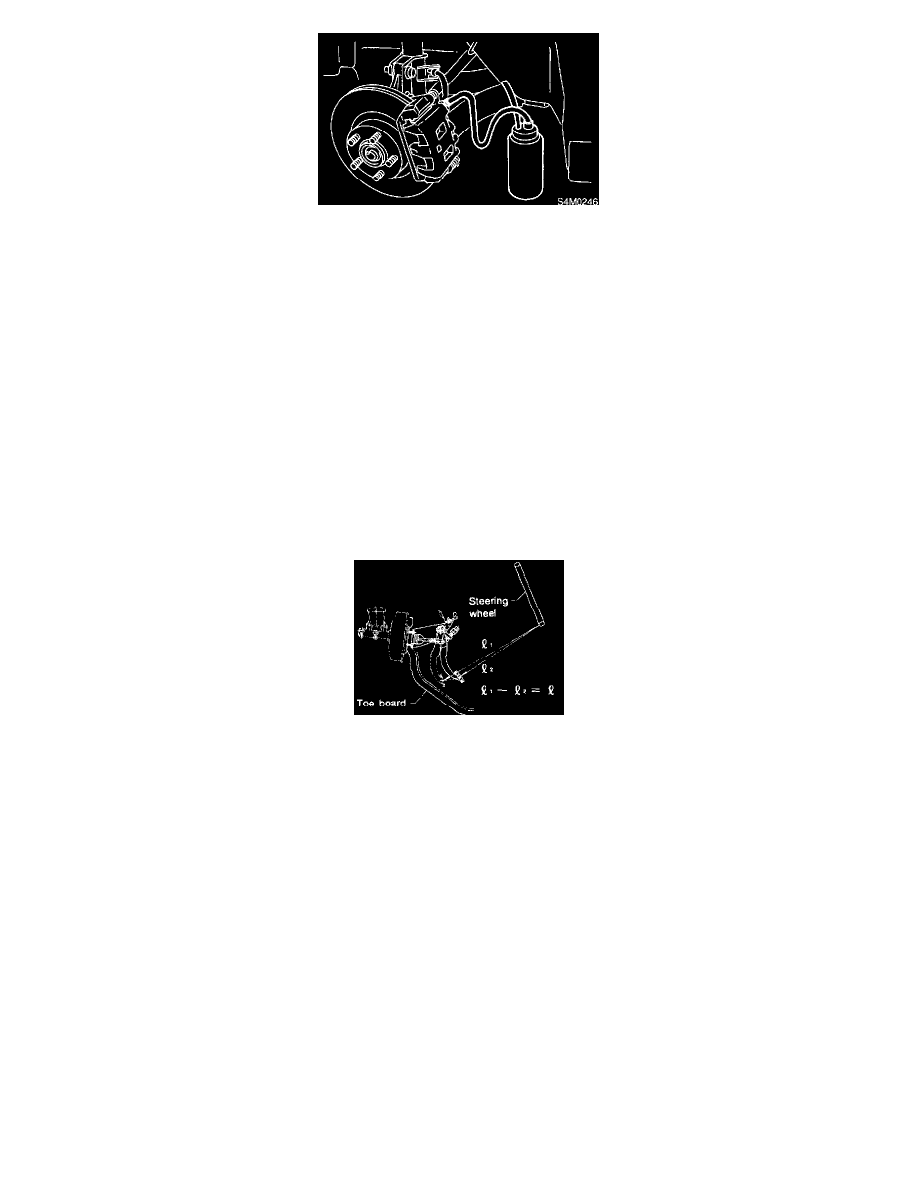Impreza 2.5 RS Sedan AWD F4-2.5L SOHC (2002)

2) Fit one end of vinyl tube into the air bleeder and put the other end into a brake fluid container.
CAUTION: Brake fluid replacement sequence; (A) Front right -> (B) Rear left -> (C) Front left -> (D) Rear right
3) Slowly depress the brake pedal and keep it depressed. Then, open the air bleeder to discharge air together with the fluid.
Release the air bleeder for 1 to 2 seconds.
Next, with the bleeder closed, slowly release the brake pedal.
Repeat these steps until there is no more air bubbles in the vinyl tube.
Allow 3 to 4 seconds between two brake pedal operations.
CAUTION: Cover the bleeder with waste cloth, when loosening it, to prevent brake fluid from being splashed over surrounding parts.
NOTE: Brake pedal operating must be very slow.
4) Tighten the air bleeder securely when no air bubbles are visible.
Air bleeder tightening torque: 8 Nm (0.8 kgf-m, 5.8 ft. lbs.)
5) Perform these steps for the brakes connecting to the secondary chamber of master cylinder, first, and then for the ones connecting to primary
chamber. With all procedures completed, fully depress the brake pedal and keep it in that position for approximately 20 seconds to make sure
that there is no leak evident in the entire system.
6) Check the pedal stroke.
While the engine is idling, depress the brake pedal with a 490 N (50 kgf-m, 110 lbs.) load and measure the distance between the brake pedal and
steering wheel. With the brake pedal released, measure the distance between the pedal and steering wheel again. The difference between the two
measurements must be more than specified.
Specified pedal stroke:
Without ABS: 90 mm (3.54 inches)
With ABS: 95 mm (3.74 inches)
When depressing brake pedal with a 490 N (50 kg, 110 lbs.) load.
7) If the distance is more than specified, there is a possibility that air is in the brake line. Bleed the brake line until pedal stroke meets the
specification.
8) Operate the hydraulic control unit in the sequence control mode. (With ABS)
9) Recheck the brake stroke.
10) If the distance is more than specified, there is a possibility air is in the inside of the hydraulic unit. Repeat above steps 2 to 9 until pedal stroke
meets the specification.
11) Add brake fluid to the required level (MAX. level) of reservoir tank.
12) As a final step, test run the vehicle at low speed and apply brakes relatively hard 2 to 3 times to ensure that brakes provide normal braking action
on all four wheels without dragging and uneven braking.
